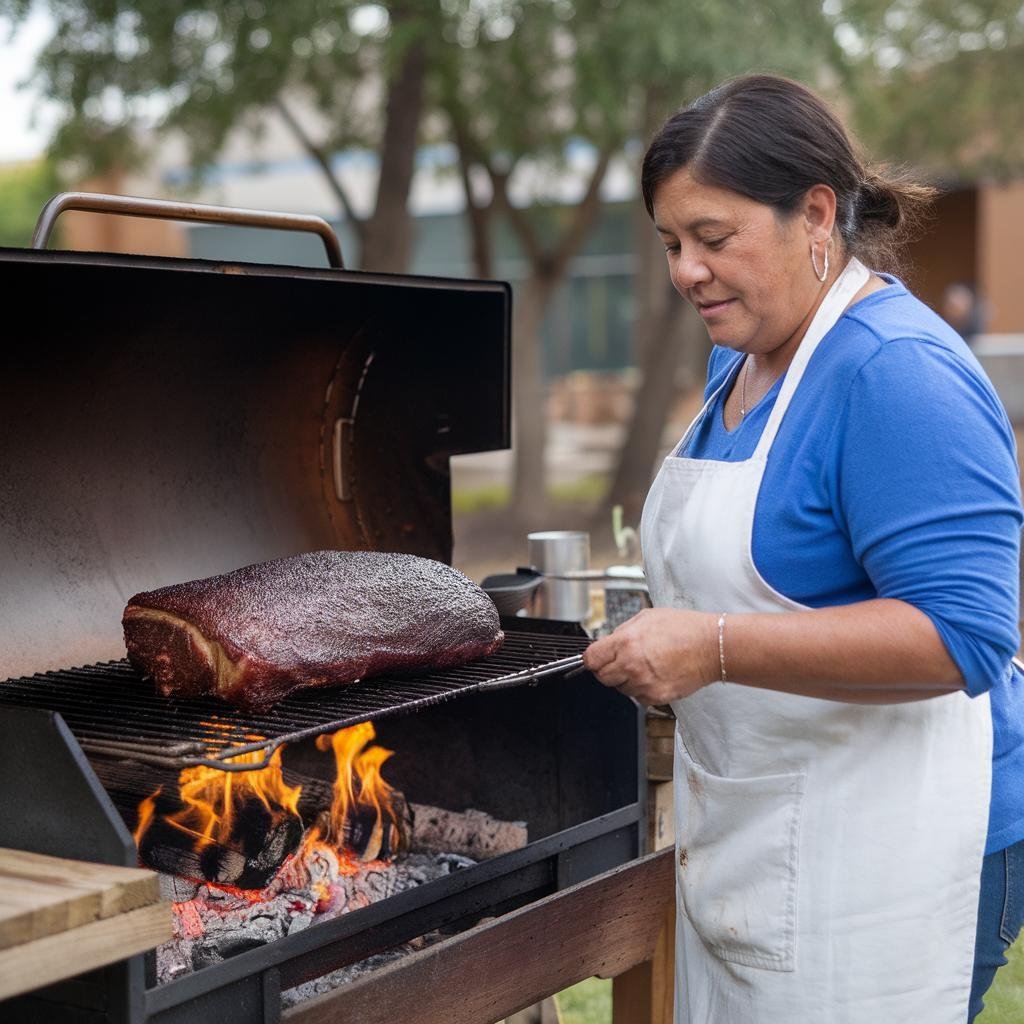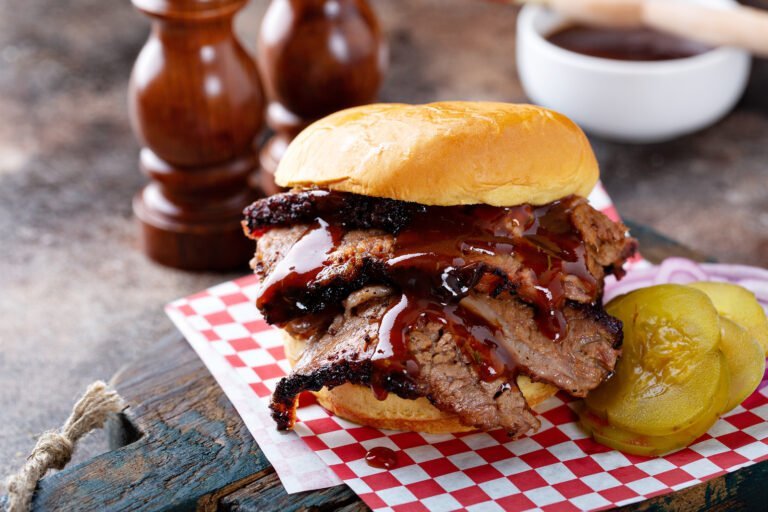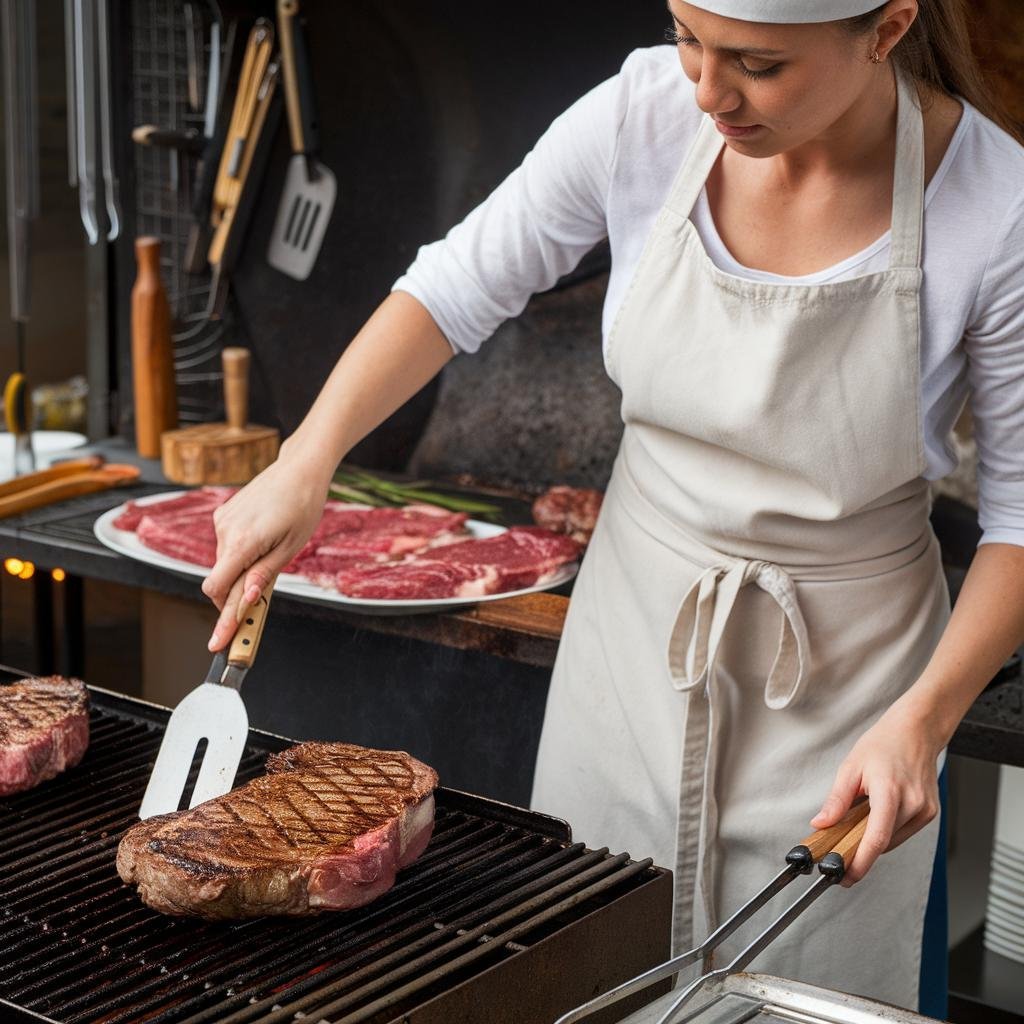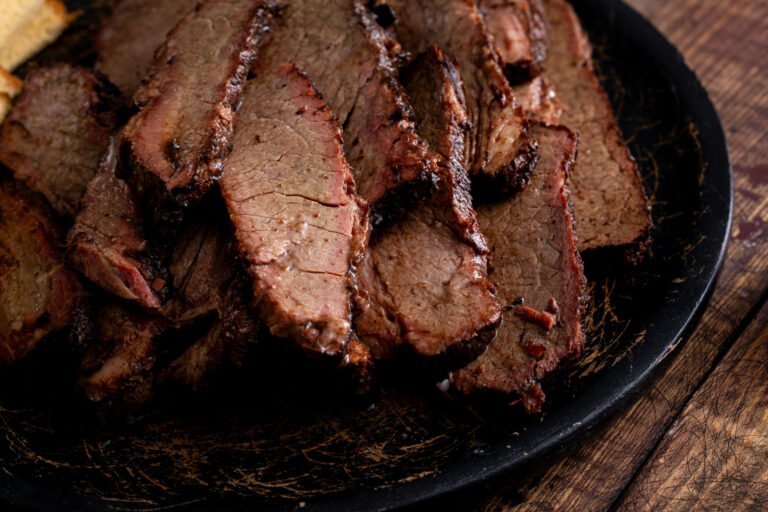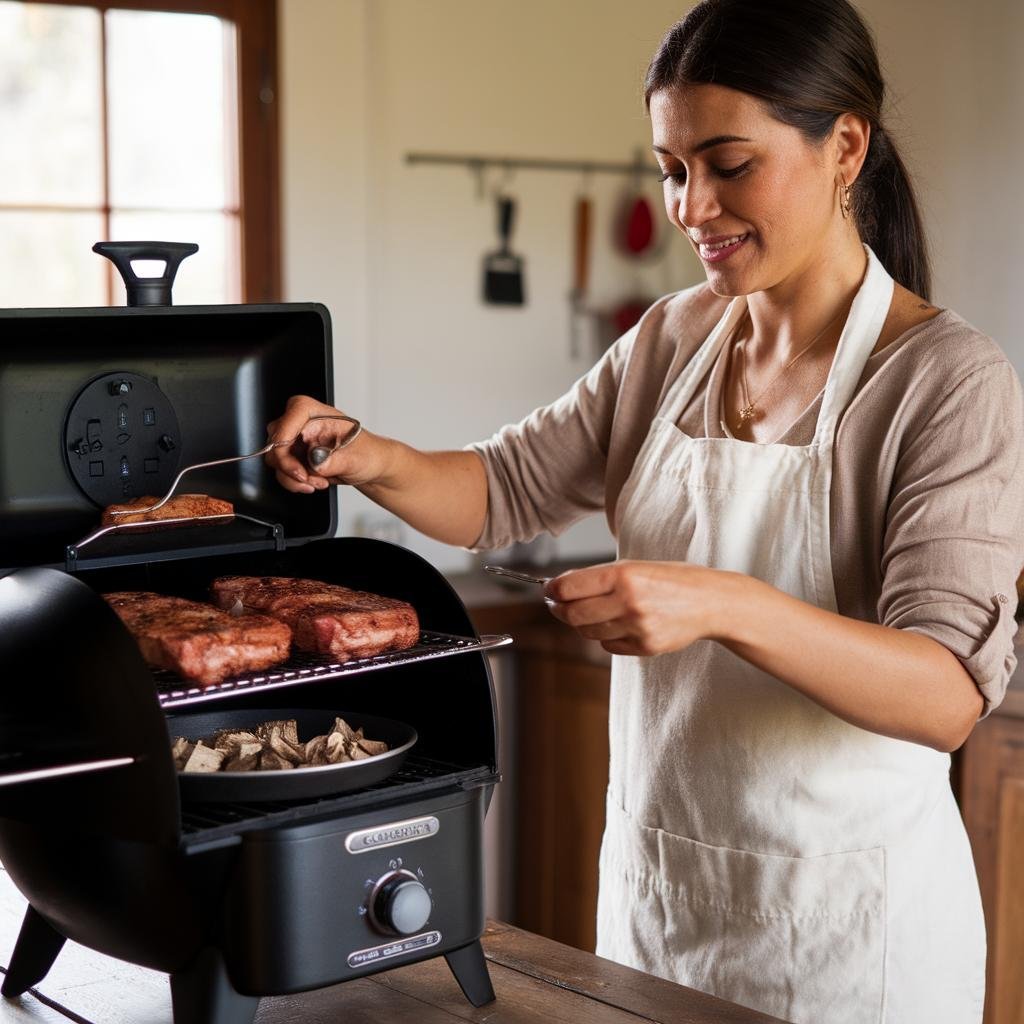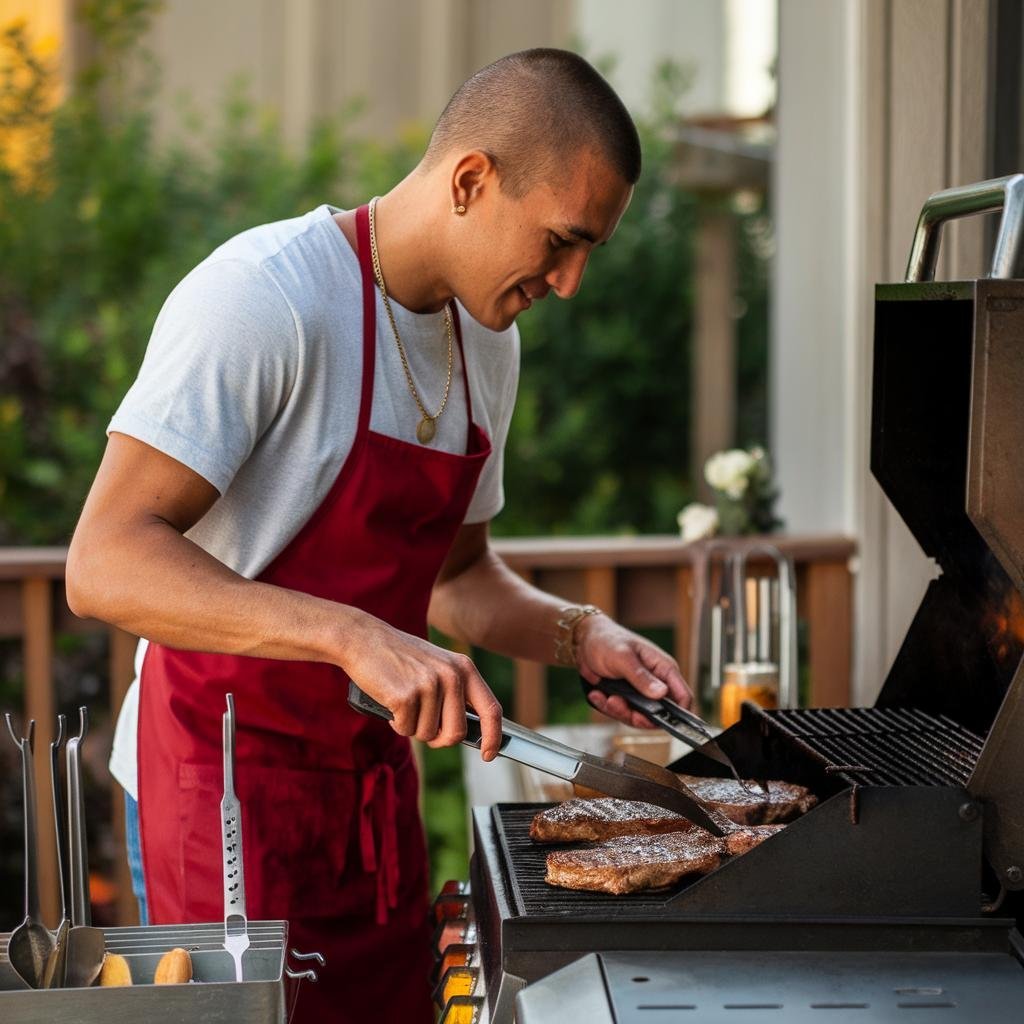Disclosure: This Post Contains Affiliate Links; We earn a commission on purchases.
Smoking brisket is an art that requires time, patience, and a passion for creating tender, flavorful meat. Whether you’re a seasoned pitmaster or a beginner, understanding the basics is crucial for achieving the best results. In this article, we’ll guide you through the process of cooking a mouthwatering BBQ brisket, from choosing the right cut to serving it up with a delicious homemade BBQ sauce.
To start, you’ll need a smoker. Whether it’s charcoal, electric, or wood-fired, make sure your smoker can maintain a steady temperature of around 225 to 250 degrees Fahrenheit (107 to 121 degrees Celsius). This low and slow cooking method will allow the brisket to become tender and develop a rich, smoky flavor.
Before you place the brisket in the smoker, it’s essential to season it properly. The best brisket rub consists of a combination of salt, black pepper, garlic powder, and paprika. Generously coat all sides of the brisket with the rub, ensuring every inch is covered.
Once your smoker is preheated and your brisket is seasoned, it’s time to start smoking. Place the brisket on the grates, fat side up, and let it cook for the desired amount of time. A general guideline is about 1 to 1.5 hours per pound of meat. During this slow-cooking process, the brisket will absorb the flavors from the smoke, resulting in a tender and flavorful end product.
After your brisket has reached an internal temperature of 165°F, it’s time to wrap it in unwaxed butcher’s paper. This step helps to retain moisture and continue the cooking process. Return the wrapped brisket to the smoker until it reaches an internal temperature of 203°F. Once it’s cooked to perfection, let the brisket rest for at least an hour before unwrapping and slicing.
Serve the smoked brisket with a homemade BBQ sauce on the side and enjoy it with your favorite sides like coleslaw, cornbread, or baked beans. The combination of tender meat, smoky flavor, and tangy sauce will leave your taste buds begging for more.
Key Takeaways:
- Smoking brisket requires patience and attention to detail.
- Choose a whole packer brisket weighing around 12 to 14 pounds.
- Season the brisket with a rub consisting of salt, pepper, garlic powder, and paprika.
- Smoke the brisket at a steady temperature of 225 to 250 degrees Fahrenheit.
- Let the brisket rest for at least an hour before slicing and serving with homemade BBQ sauce.
Choosing the Right Brisket and Seasonings
When it comes to achieving the perfect smoked brisket, selecting the right cut of meat and using the right seasonings are crucial steps. Let’s explore how to choose the ideal brisket and create a flavorful rub.
Choosing the Perfect Brisket
For tender and succulent results, opt for a whole packer brisket weighing around 12 to 14 pounds. This cut includes both the point and flat muscles, offering a balance of flavor and texture. Before smoking, trim away any silver skin or excessive fat, leaving a 1/4-inch layer of fat. This thin layer acts as a protective barrier during the prolonged cooking process.
Creating the Flavorful Rub
To elevate the taste of your brisket, prepare a rub using simple yet powerful ingredients. For a classic and robust flavor, combine coarse black pepper and coarse kosher salt in equal parts. If desired, add a hint of onion powder for additional depth. Mix the ingredients thoroughly, ensuring an even distribution of flavors.
Solid seasoning brings out the best in brisket, creating a harmonious blend of savory and smoky flavors.
Generously coat all sides of the brisket with the rub, allowing the flavors to penetrate the meat. Massage the seasoning into the surface, ensuring full coverage and creating an appealing crust during smoking.
Visualize Your Perfect Brisket
An image that perfectly captures the essence of choosing the right brisket and creating an irresistible rub:
Smoking the Brisket
Once the brisket has been properly seasoned, it’s time to move on to the smoking stage. This is where the magic happens and the flavors of the wood infuse into the meat, creating a delicious smoky taste. Follow these steps to ensure a successful smoking process:
- Preheat the smoker: Before placing the brisket on the smoker, it’s essential to preheat it to the right temperature. Set the smoker to a range of 225 to 250 degrees Fahrenheit (107 to 121 degrees Celsius). This low and slow cooking technique allows the meat to cook slowly, resulting in tender, flavorful brisket.
- Choose your wood: Select your preferred hardwood for smoking, such as oak or hickory. These woods are known for their rich flavors that complement the brisket. Other options include mesquite or fruitwoods if you prefer a milder smoky taste. Make sure to have enough wood chips or chunks on hand to maintain a consistent smoke throughout the cooking process.
- Place the brisket: Carefully place the seasoned brisket on the smoker grates, fat side up. The fat acts as a protective barrier, keeping the meat moist during the long cooking time. Position the brisket in the center of the smoker to ensure even heat distribution.
- Maintain temperature: It’s crucial to maintain a steady temperature throughout the smoking process. Fluctuations in temperature can affect the cooking time and result in unevenly cooked brisket. Avoid constantly opening the smoker lid, as this can cause temperature drops. Instead, monitor the smoker temperature regularly and make adjustments as needed.
- Smoking time: The smoking time can vary based on the size of the brisket. As a general guideline, allow for approximately 1 to 1.5 hours of cooking time per pound of brisket. This slow and low approach ensures that the meat cooks evenly, allowing the flavors to develop and penetrate the brisket.
- Smoke infusion: As the brisket smokes, the wood flavors are infused into the meat, creating a delicious smoky taste. The smoke also helps to develop a flavorful crust on the outside of the brisket. This process, combined with the breakdown of collagen in the meat, contributes to the tender texture and mouthwatering flavor of the final dish.
Continue to monitor the smoker temperature and smoke infusion throughout the cooking process. Remember, patience is key when it comes to smoking brisket. The slow cooking method allows the flavors to meld together and create an unforgettable barbecue experience.
Resting and Serving the Brisket
Once the internal temperature of the brisket reaches 165°F, it’s time to remove it from the smoker and give it a well-deserved rest. This step is crucial to ensure that the juices redistribute throughout the meat, resulting in a more tender and flavorful brisket. To do this, wrap the brisket tightly in unwaxed butcher’s paper, which will help retain the moisture.
But why is rest time so important? When the brisket is cooked, the heat causes the juices to move towards the center of the meat. By allowing it to rest, the juices have a chance to redistribute, resulting in a juicier end product. Additionally, the rest time allows the brisket to cool slightly, making it easier to carve without losing too much of that delicious moisture.
For optimal tenderness, it’s recommended to rest the brisket for at least 1 hour. This gives you the perfect opportunity to prepare your serving area and any accompanying dishes. Resting for longer, up to a couple of hours, can further enhance the flavor and texture of the brisket. Just be sure to keep it wrapped during this time to retain the heat and moisture.
Now that the brisket has had its well-deserved rest, it’s time to unwrap, slice, and serve! Use a brisket knife, preferably one with a long, thin blade, to carve the tender meat into thin slices. This type of knife allows for clean cuts and helps maintain the brisket’s juicy texture. Remember to slice against the grain for maximum tenderness.
When it comes to serving suggestions, there are endless possibilities to complement your smoked brisket. Traditional options include serving it on a platter with your favorite sides such as coleslaw, cornbread, or baked beans. Alternatively, you can create delicious brisket sandwiches with soft buns and tangy BBQ sauce. Let your creativity shine and experiment with different combinations to create the perfect meal.
Brisket Carving Tips:
- Use a sharp, long-bladed brisket knife for clean cuts.
- Carve the brisket against the grain to ensure maximum tenderness.
- Slice the meat into thin, even pieces for a consistent texture.
- Serve the brisket immediately after carving for optimal flavor.
| Resting and Serving Tips |
|---|
| Rest the brisket wrapped in unwaxed butcher’s paper for at least 1 hour. Longer resting times can further enhance tenderness. |
| Use a brisket knife to carve thin slices against the grain for maximum tenderness. |
| Pair the smoked brisket with traditional sides like coleslaw, cornbread, or baked beans for a classic barbecue experience. |
| Get creative and experiment with different serving suggestions such as brisket sandwiches or tacos. |
Conclusion
Mastering the art of slow-smoked brisket takes time and practice, but the results are well worth the effort. By following the steps outlined in this BBQ brisket recipe, you can achieve a tender, juicy, and flavorful brisket that will impress your friends and family.
Remember to choose the right brisket, season it well with a delicious rub, and maintain a consistent smoker temperature throughout the cooking process. Allow the brisket to rest for at least an hour before slicing, ensuring that the meat stays tender and flavorful.
No BBQ brisket is complete without a homemade BBQ sauce on the side. Whether you prefer a tangy, sweet, or spicy sauce, adding your own touch of flavor will elevate your brisket to the next level.
So, fire up your smoker, gather your ingredients, and get ready to become a pitmaster in your own backyard. With this BBQ brisket recipe, you’ll be able to enjoy the smoky flavors and the satisfaction of mastering this classic BBQ dish.
References

Ryan Conlon is a BBQ enthusiast and inspired chef on a journey through the smoky, savory world of outdoor cooking. Hailing from the heart of the Midwest, Ryan’s passion for grilling ignited during his early years, where family gatherings often revolved around the sizzle of the grill and the aroma of seasoned meats.

